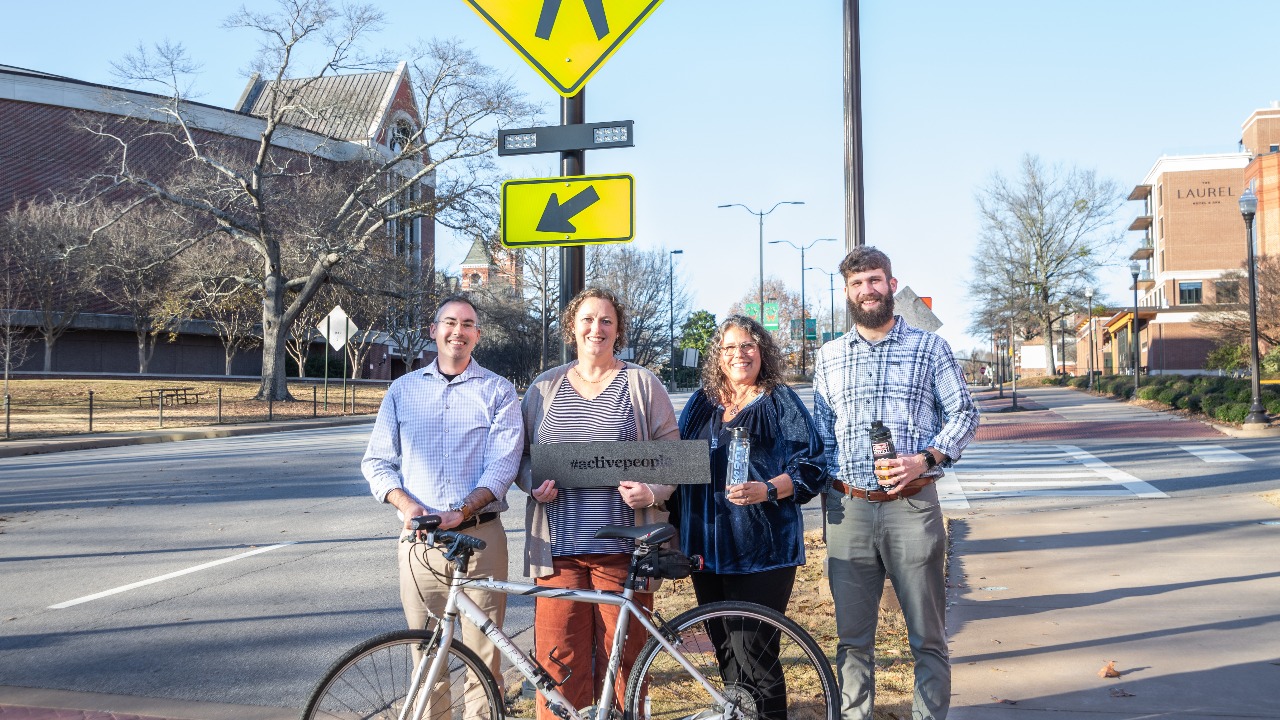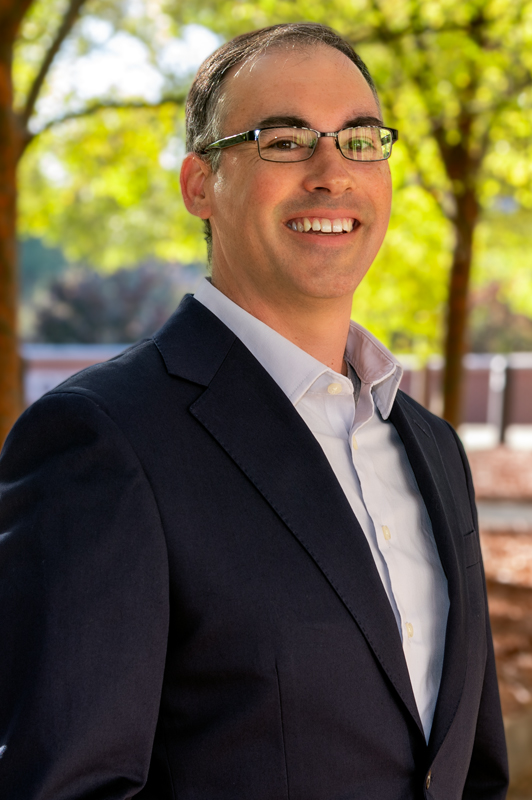Civil engineering professor collaborates with Alabama Extension to help communities meet transportation needs
Published: Nov 13, 2023 2:00 PM
By Dustin Duncan
Jeff LaMondia, a professor of civil and environmental engineering, has been instrumental in empowering numerous small communities in Alabama to address their distinctive local active transportation needs.
Fortunately for Alabama, LaMondia will continue working with communities to promote safe/ accessible active travel and improve access to healthier foods through a new five-year, $4.4 million grant from the Centers for Disease Control and Prevention (CDC) in collaboration with the Alabama Cooperative Extension System (ACES) Live Well Alabama Thriving Communities team.
This work builds upon a previous multi-year, multi-million-dollar grant from the CDC as part of its High Obesity Program (HOP), which supports land-grant universities to work through cooperative Extension programs in counties where the adult obesity rate exceeds 40%.
Their previous work not only generated community action plans and improved transportation infrastructure, but the team received the 2023 National Technology Transfer Leadership Award from the Council of University Transportation Centers for their outreach work.
LaMondia, co-investigator on the grant, is teaming with Sondra Parmer, assistant director for Federal Nutrition Programs, Ruth Brock, Thriving Communities program coordinator and Mitch Carter, Thriving Communities administrator.
The Thriving Communities team will collaborate with Alabama Extension County offices and county coalitions to implement evidence-based initiatives to improve access to healthier foods and promote safe and accessible physical activity. Thriving Communities will focus on addressing health disparities related to poor nutrition, physical activity, and obesity in 12 Alabama counties: Barbour, Bullock, Butler, Escambia, Etowah, Greene, Hale, Marengo, Perry, Russell, Sumter, and Wilcox.
LaMondia worked with counties to identify their specific transportation challenges to develop short- and long-term plans for transportation improvements.
“We talk about active transportation a lot in urban areas, and we do a lot of projects in bigger cities that promote walking and cycling to everyday destinations,” LaMondia said. “That doesn’t always roll out to these smaller communities for many reasons.”
LaMondia said most of the time smaller communities don’t know their options for getting help for projects.
“Many times, they don’t have the funding to make it happen, or, if they do have funding, community leadership isn’t aware of what transportation improvements will help them best achieve their goals,” he said.
Smaller communities are well-positioned to undertake transportation projects with just a bit of assistance because there are numerous opportunities to create sidewalks, crosswalks, and bike lanes, LaMondia said.
A significant step in the process for LaMondia involves working through the AU PARTNER Program with communities. This program, developed by LaMondia and the Thriving Communities team, provides a step-by-step process for communities to identify walking and bicycling improvements, address needs and concerns and seek funding to implement these improvements. The program's website also offers various resource tools for communities to download to initiate their transportation improvement planning.
The Active Routes Visualization Tool, also developed by LaMondia, helps communities visualize where to put walking and cycling routes using ArcGIS software. It allows communities to enter local points of interest and predicts where pedestrians and cyclists would want to walk and bike.
"The information from the ARV Tool enables us to provide communities with insights into where we believe activity may occur and where to make improvements," LaMondia said. "However, since local coalitions have a deeper understanding of their communities, they can inform us about what will or won't work in those areas. It truly is a collaborative effort."
The grant project with Alabama Extension allows LaMondia to flex his engineering muscles in active transportation while the other side of the team takes his research and puts it into real-world practice. Each ACES County Extension Coordinator in the selected county is very active with community coalitions to ensure projects identified and selected are completed.
“Combining our expertise in engineering and community outreach has been the most successful part of the project,” LaMondia said.
Media Contact: , dzd0065@auburn.edu,
Jeff LaMondia, Sondra Parmer, Ruth Brock and Mitch Carter.


